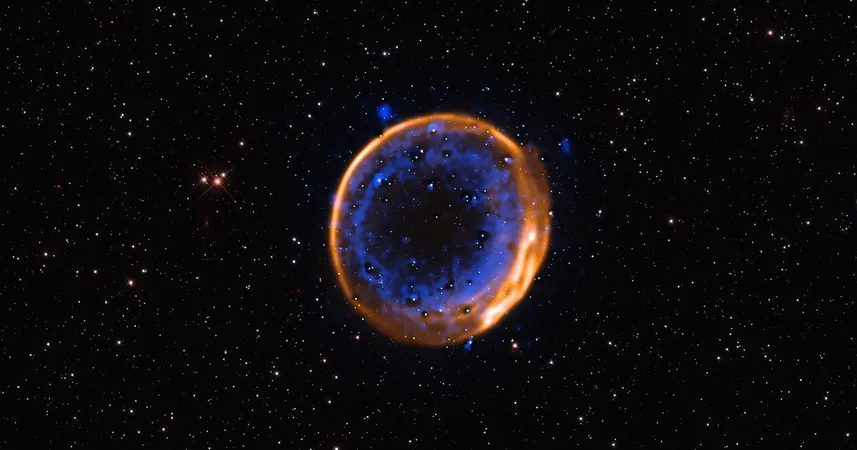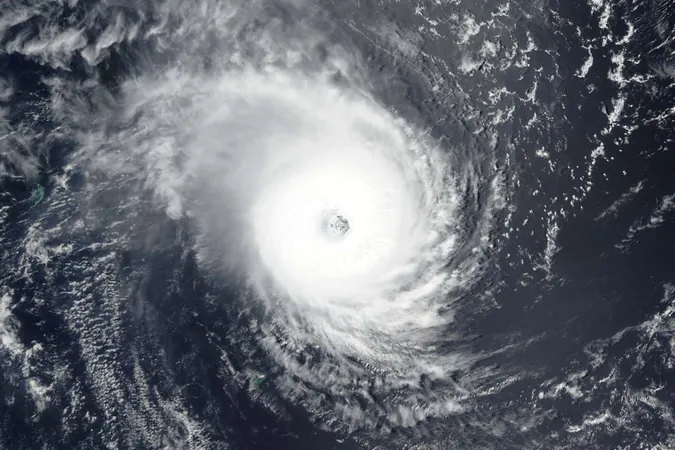
Astrophysics Breakthrough: First-Ever Image Captures a Star's Double-Detonation Demise!
2025-07-04
Author: Rajesh
A Stellar Mystery Unveiled
For decades, astronomers have theorized that stars could meet a spectacular end through a devastating one-two explosion sequence, but direct visual proof was elusive—until now!
Using the powerful Very Large Telescope in Chile, scientists have finally captured the first-ever image of a star undergoing a rare "double-detonation," culminating in a breathtaking supernova remnant.
Revolutionizing Our Understanding of Stellar Explosions
The groundbreaking study, published in *Nature Astronomy*, sheds light on the evolutionary journey of white dwarfs—stars that have long burned out but hold immense importance in cosmic studies.
Lead researcher Priyam Das from the University of New South Wales Canberra stated, "White dwarf explosions are crucial to astronomy, yet the exact trigger for these cataclysmic events has remained a mystery."
How Stars Meet Their Fate
When a massive star, often several times the Sun's mass, exhausts its nuclear fuel, it collapses under its own gravity, resulting in a supernova. While the aftermath can vary—some stars are obliterated, while others may form neutron stars or black holes—the path of a white dwarf is particularly fascinating.
Drawing from this new image, astronomers revealed that Type Ia supernovae emerge from low-mass stars that have exhausted their fuel, leaving behind a dense remnant known as a white dwarf. These celestial objects possess intense gravitational forces, which play a pivotal role in stellar interactions.
The Mechanics of a Cosmic Explosion
In binary systems, a white dwarf can siphon off material from a companion star. When enough of this material collects, it triggers a catastrophic thermonuclear explosion that can devastate both stars. Traditionally, it was believed that one explosion marked the end. However, the latest findings suggest a more intricate scenario involving *two* explosions.
Researchers propose that the first blast occurs within a cloud of unstable helium surrounding the white dwarf. This initial explosion sets off a powerful second explosion in the star's core, thus leading to the extraordinary double-detonation event.
A Cosmic Blueprint: Signs of a Double-Detonation
This type of supernova takes place before the white dwarf reaches the famous Chandrasekhar mass limit, and the researchers have documented a stunning visual signature: two shells of calcium. The image clearly illustrates this phenomenon, with blue depicting the distinctive calcium structures.
Coauthor Ivo Seitenzahl noted, "These observations are a clear indication that white dwarfs can explode even before reaching the critical mass, confirming the occurrence of the double-detonation mechanism in nature."
Implications for Cosmic Measurements
This groundbreaking research is vital, as Type Ia supernovae serve as "standard candles" for measuring cosmic distances due to their predictable brightness. By understanding their explosive nature, astronomers can refine their cosmic measuring tools.
Das expressed the excitement of uncovering such complex celestial events: "Revealing the inner workings of these spectacular explosions is incredibly rewarding."
More Cosmic Wonders Await
As scientists continue to decode the mysteries of our universe, this landmark finding is just the tip of the iceberg, paving the way for understanding the universe's earliest years.




 Brasil (PT)
Brasil (PT)
 Canada (EN)
Canada (EN)
 Chile (ES)
Chile (ES)
 Česko (CS)
Česko (CS)
 대한민국 (KO)
대한민국 (KO)
 España (ES)
España (ES)
 France (FR)
France (FR)
 Hong Kong (EN)
Hong Kong (EN)
 Italia (IT)
Italia (IT)
 日本 (JA)
日本 (JA)
 Magyarország (HU)
Magyarország (HU)
 Norge (NO)
Norge (NO)
 Polska (PL)
Polska (PL)
 Schweiz (DE)
Schweiz (DE)
 Singapore (EN)
Singapore (EN)
 Sverige (SV)
Sverige (SV)
 Suomi (FI)
Suomi (FI)
 Türkiye (TR)
Türkiye (TR)
 الإمارات العربية المتحدة (AR)
الإمارات العربية المتحدة (AR)